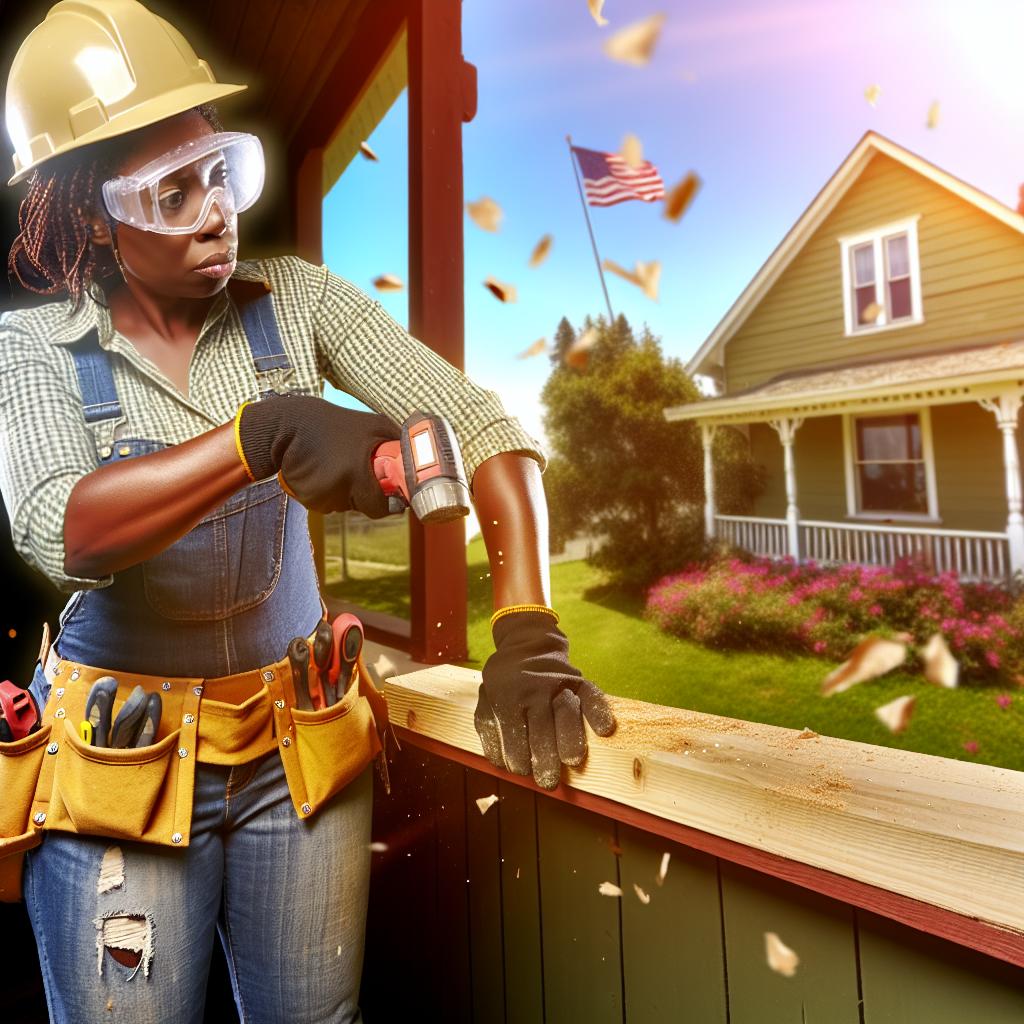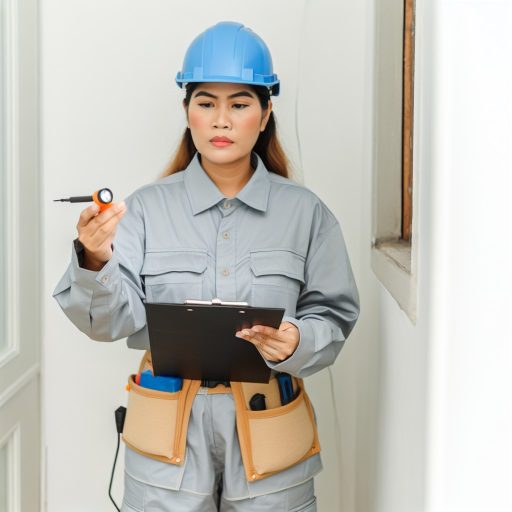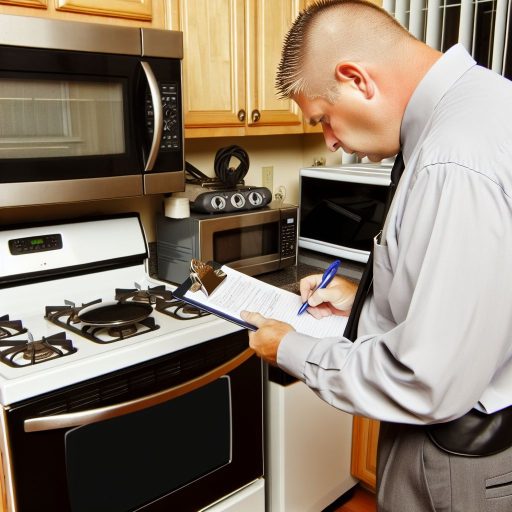Understanding the Purpose of a Home Inspection Checklist
A home inspection checklist serves several important functions.
Firstly, it helps identify potential issues with a property.
This process allows buyers to make informed decisions.
Next, it aids sellers in preparing their homes for sale.
By understanding the home’s condition, they can avoid surprises.
Moreover, an inspection checklist promotes transparency during negotiations.
Both parties benefit from clarity regarding the property’s state.
Additionally, it assists in prioritizing repairs and renovations.
Homeowners can focus efforts on high-impact areas first.
Using a checklist facilitates better organization of tasks.
It provides a roadmap for project management after inspection.
Furthermore, it can enhance the value of the home.
Well-documented repairs will attract prospective buyers.
Lastly, keeping track of maintenance promotes long-term home health.
This minimizes costly surprises in the future.
A home inspection checklist fosters better decision-making.
It contributes to smoother transactions and better property management.
Step-by-Step Guide to Reviewing Inspection Reports
Initial Preparation
Begin by gathering all relevant inspection documentation.
Make sure to have the complete inspection report on hand.
Take note of any recommendations made by the inspector.
Organize the documents to facilitate the review process.
Reviewing the Report
Start with the summary section to grasp major findings.
Identify critical repairs needing immediate attention.
Next, dive into specific sections for detailed insights.
Pay close attention to electrical and plumbing issues.
Mark any items needing further evaluation from specialists.
Prioritizing Repairs
List repairs in order of urgency after reviewing findings.
Consider safety hazards as top priority items.
Address structural issues next to avoid further damage.
Plan less critical repairs for a subsequent phase.
Determining Budget and Resources
Estimate costs for each repair or renovation needed.
Consult with contractors for accurate quotes and timelines.
Prioritize budget allocations based on immediate needs.
Explore options for DIY projects to save on costs.
Setting a Timeline
Establish a timeline for each repair based on priority.
Ensure that safety-critical repairs occur first.
Communicate with contractors about their availability.
Adjust timelines as needed to accommodate unexpected delays.
Implementing the Repairs
Start scheduling contractors for urgent repairs.
Provide clear instructions for each identified task.
Monitor progress closely to ensure quality work.
Stay flexible and adjust plans as necessary during repairs.
Final Review and Maintenance Planning
Conduct a final inspection once repairs are complete.
Document all completed work for future reference.
Create a long-term maintenance plan to prevent issues.
Regularly review the property to catch potential problems early.
Prioritizing Repairs: Safety vs. Aesthetic Concerns
Understanding Safety Concerns
Safety should always come first when considering home repairs.
Identify issues that pose immediate risks to residents.
Structural damage often requires urgent attention.
Examples include roof leaks or compromised foundations.
Electrical problems may also result in hazards.
Certain plumbing issues can lead to significant water damage.
Recognizing Aesthetic Concerns
Aesthetic repairs enhance the visual appeal of your home.
These may include paint, flooring, or landscaping improvements.
While essential, they often take a back seat to safety issues.
Consider how these upgrades enhance your living space.
They can also increase the overall value of your home.
Establishing a Repair Prioritization List
Create a list of repairs based on safety and aesthetics.
Start with immediate safety concerns and list them first.
Next, document cosmetic improvements you wish to make.
Sort priorities into urgent and non-urgent tasks.
Review your list regularly as repairs are completed.
Consulting Professionals
Involve professionals for major repairs or renovations.
Experts can provide valuable insights on safety issues.
Consult a licensed contractor for structural repairs.
Additionally, hire qualified electricians and plumbers.
Consider getting a second opinion for larger projects.
Balancing Safety and Aesthetic Repairs
Understand that safety and aesthetics can coexist.
Some repairs can address both concerns simultaneously.
For instance, replacing an old roof can improve appearance and safety.
Focus on completing high-priority tasks efficiently.
Track your progress to see the impact of your efforts.
Learn More: Top Mistakes First-Time Homebuyers Should Avoid When Purchasing A Home
Essential Repairs
Common Issues Found During Inspections
Home inspections often reveal common issues needing attention.
These issues can lead to serious complications if ignored.
Understanding these problems is the first step toward resolution.
Electrical System Issues
Improper wiring is a frequent concern in many homes.
Exposed wires can pose serious safety hazards.
It is crucial to hire a licensed electrician for repairs.
Furthermore, outdated panels often require upgrades.
Regular maintenance can prevent electrical failures.
Roofing Concerns
Damaged shingles are common findings during inspections.
Leaks can develop from missing or broken shingles.
Identifying potential water damage early is essential.
Ensure your roof is regularly inspected for seasonal wear.
Plumbing Problems
Leaky pipes and fixtures are prevalent issues in many homes.
They can cause water damage and mold growth over time.
Inspecting for rust or corrosion can indicate leaks.
Also, ensure that drainage systems function properly.
Foundation Issues
Cracks in the foundation can indicate serious structural problems.
Signs include uneven floors or doors that do not close properly.
Addressing foundation issues promptly is critical for safety.
Consider consulting a structural engineer for major concerns.
Mold and Mildew
Home inspections often reveal mold issues in damp areas.
These can affect indoor air quality and health.
Identify sources of moisture to prevent future growth.
Professional remediation may be necessary for severe cases.
HVAC System Malfunctions
Heating and cooling systems may need repairs after an inspection.
Filters should be changed regularly for optimal performance.
Consider scheduling annual maintenance for HVAC systems.
Detecting issues early can save on costly repairs.
Learn More: Understanding Closing Costs and Their Role in Homebuying
Budgeting for Repairs and Renovations
Understanding Your Financial Limits
Begin by assessing your overall financial situation.
Review your income and monthly expenses.
This assessment helps set a realistic budget.
Moreover, consider your savings for emergencies.
A well-prepared budget includes all potential costs.
Identifying Necessary Repairs
Conduct a thorough inspection of your home.
Take note of repairs that require immediate attention.
Prioritize urgent repairs to avoid further damage.
For instance, leaky roofs or plumbing issues should top the list.
Researching Renovation Costs
Obtain quotes from multiple contractors for repairs and renovations.
This process provides insight into market pricing.
Additionally, research the cost of materials needed.
Comparing these costs allows for better budgeting.
Considering Potential Increases in Value
Focus on renovations that add value to your home.
Kitchen and bathroom upgrades often yield high returns.
Moreover, enhancing curb appeal can attract future buyers.
Investing wisely can mean significant returns down the road.
Creating a Contingency Fund
Always include a contingency fund in your budget.
This fund should cover unexpected costs during renovations.
Common issues can arise, such as hidden structural problems.
Aiming for ten to twenty percent of the total budget is advisable.
Financing Options for Larger Projects
Explore financing options if repairs exceed your budget.
Personal loans or home equity lines of credit may be viable choices.
Furthermore, consider grants for energy-efficient upgrades.
Research thoroughly to find the best financing solution.
Explore Further: Home Inspection Checklist For Understanding Local Building Codes
Selecting Reliable Contractors
Assessing Qualifications
Begin by checking the contractor’s qualifications.
Verify their licenses and certifications.
These credentials prove their competence in handling repairs.
Consider contractors who have specialized training.
Evaluating Experience
Experience plays a crucial role in contractor selection.
Ask potential contractors about their years in the industry.
Inquire about similar projects they have completed.
Experienced contractors often handle unexpected issues effectively.
Checking References
Request references from previous clients.
Follow up with these clients to gauge satisfaction.
Inquire about the quality of work and timeliness.
Positive feedback signals a trustworthy contractor.
Reviewing Online Ratings
Online reviews offer insight into a contractor’s reputation.
Visit platforms like Angie’s List and Yelp for ratings.
A mixed review record can raise red flags.
Focus on contractors with consistently positive feedback.
Obtaining Written Estimates
Request detailed written estimates from multiple contractors.
Estimates should break down costs and services offered.
This transparency helps prevent misunderstandings later.
Compare estimates to ensure you receive fair pricing.
Assessing Communication Skills
Effective communication is vital during renovations.
Evaluate how a contractor communicates during initial meetings.
They should be responsive and attentive to your concerns.
Good communication leads to a smoother renovation experience.
Confirming Insurance Coverage
Verify that contractors have liability insurance.
This coverage protects you in case of accidental damages.
Insurance also signifies a professional approach to business.
Do not hesitate to ask for proof of insurance before hiring.
Find Out More: A Beginner’s Guide To Home Inspections For First-Time Homebuyers

Timing for Repairs and Renovations: Seasonal Considerations
Understanding Seasonal Impacts
Seasons greatly affect home repairs and renovations.
Each season presents unique challenges and opportunities.
For example, winter often complicates outdoor work.
Conversely, summer provides the best conditions for many projects.
Spring: Ideal for Exterior Renovations
Spring is the perfect time for exterior repairs.
After winter, homes often need thorough inspections.
Focus on cleaning gutters and inspecting roofs.
Additionally, repainting and landscaping enhance curb appeal.
Plan these tasks early to beat summer heat.
Summer: Perfect for Major Projects
Summer allows for larger renovations and repairs.
This season typically offers consistent weather.
Consider major projects like kitchen remodels or room additions.
However, ensure contractors are booked well in advance.
Longer days also provide more daylight for work.
Fall: Preparing for Winter
Fall is crucial for preparing a home for winter.
Inspect heating systems before the cold arrives.
Additionally, clean chimneys and check insulation.
Fall is also an excellent time for exterior painting.
Secure any outdoor furniture and prepare gardens for frost.
Winter: Focus on Indoor Projects
Winter may limit outdoor activities but offers indoor opportunities.
Focus on updating bathrooms and other interior spaces.
Furthermore, winter is ideal for planning future projects.
Take advantage of lower contractor availability during this season.
Prioritize tasks that do not require external conditions.
Managing Time Effectively
Consider the timing of repairs and renovations carefully.
Create a detailed timeline for each project.
Keep in mind how seasons impact various tasks.
Regularly review and adjust your plan as needed.
This proactive approach ensures timely completion of projects.
Documenting Repairs for Future Reference and Resale
Importance of Documentation
Documenting repairs enhances transparency for potential buyers.
It also provides a clear history of your home’s maintenance.
This history can significantly improve buyer confidence.
Moreover, well-documented repairs can justify the asking price.
What to Document
Record all repairs and renovations systematically.
Include dates, costs, and the names of contractors used.
Take before and after photos to visually document changes.
Maintain a folder or digital file for all documents.
Creating a Comprehensive Repair Log
A repair log should include specific details.
List the type of repair performed and its location.
Note any materials used and their respective costs.
Detail the reason behind each repair as well.
Best Practices for Documenting Repairs
Regularly update your repair log to keep information current.
Store receipts and warranty information together.
Use online platforms or apps to keep everything organized.
Consider sharing this information during home showings.
Impacts on Resale Value
A well-documented repair history can increase your home’s value.
It assures buyers that they are investing in a well-maintained property.
Repairs documented with receipts can minimize negotiation disputes.
Furthermore, it can expedite the selling process.
Maintaining Your Home After Repairs
Regular Maintenance Schedule
Create a regular maintenance schedule for your home.
This should include tasks such as cleaning gutters and changing air filters.
Additionally, check the roof periodically for any damage.
Regular inspections help prevent minor issues from escalating.
Seasonal Maintenance Tasks
Adjust your maintenance activities according to the seasons.
In the spring, focus on landscaping and outdoor repairs.
During the fall, prepare your home for winter by sealing windows.
Winter is ideal for indoor projects and checking heating systems.
Outdoor Care
Ensure your lawn and garden receive proper care year-round.
Water plants regularly and apply mulch to retain moisture.
Regularly trim shrubs and trees to promote healthy growth.
Consider seasonal planting to keep your landscape vibrant.
Interior Upkeep
Maintain the interior of your home by cleaning and organizing regularly.
Dust surfaces and vacuum carpets frequently to combat allergens.
Check plumbing fixtures for leaks and address them immediately.
Consider using eco-friendly cleaners to minimize chemical exposure.
Documentation and Record Keeping
Keep thorough records of all maintenance and repairs.
Document dates and details to track the condition of your home.
This information can aid in future repairs or renovations.
It also increases your home’s value during resale.
Seek Professional Help When Needed
Recognize when a job requires professional expertise.
Consult specialists for complex issues such as electrical or plumbing work.
Getting professional help can save time and prevent damage.
Moreover, it ensures that repairs are performed correctly and safely.
Additional Resources
Manufactured Home Permits & Inspections
Builder won’t allow home inspection until after closing. : r/RealEstate




